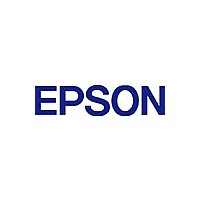S1D13700F01A100 Epson, S1D13700F01A100 Datasheet - Page 90

S1D13700F01A100
Manufacturer Part Number
S1D13700F01A100
Description
Display Drivers LCD CONTROLLER
Manufacturer
Epson
Datasheet
1.S1D13700F01A100.pdf
(266 pages)
Specifications of S1D13700F01A100
Operating Temperature (min)
-40C
Operating Temperature (max)
85C
Operating Temperature Classification
Industrial
Package Type
TQFP
Pin Count
80
Mounting
Surface Mount
Operating Supply Voltage (min)
2.7V
Lead Free Status / Rohs Status
Supplier Unconfirmed
Available stocks
Company
Part Number
Manufacturer
Quantity
Price
Company:
Part Number:
S1D13700F01A100
Manufacturer:
MTK
Quantity:
5 000
Company:
Part Number:
S1D13700F01A100
Manufacturer:
Epson Electronics America Inc-Semiconductor Div
Quantity:
10 000
Part Number:
S1D13700F01A100
Manufacturer:
EPSON/爱普生
Quantity:
20 000
- Current page: 90 of 266
- Download datasheet (3Mb)
3 M
3.1 1 Bit-Per-Pixel (2 Colors/Gray Shades)
3.2 2 Bit-Per-Pixel (4 Colors/Gray Shades)
S1D13705F00A PROGRAMMING NOTES
AND EXAMPLES (X27A-G-002-01)
Pixel 0
Pixel 0
Bit 7
Bit 7
Bit 1
The S1D13705 is capable of operating at four different color depths. For each color depth the data
format is packed pixel. S1D13705 packed pixel modes can range from one byte containing eight
adjacent pixels (1-bpp) to one byte containing just one pixel (8-bpp).
Packed pixel data may be envisioned as a stream of pixels. In this stream, pixels are packed in
adjacent to each other. If a pixel requires four bits then it will be located in the four most significant
bits of a byte. The pixel to the immediate right on the display will occupy the lower four bits of the
same byte. The next two pixels to the immediate right are located in the following byte, etc.
1-bit pixels support two color/gray shades. In this memory format each byte of display buffer
contains eight adjacent pixels. Setting or resetting any pixel requires reading the entire byte,
masking out appropriate bits and, if necessary, setting bits to “1”.
When using a color panel the two colors are derived by indexing into positions 0 and 1 of the Look-
Up Table. If the first two LUT elements are set to black (RGB = 0 0 0) and white (RGB = F F F) then
each “0” bit of display memory will display as a black pixel and each “1” bit will display as a white
pixel. The two LUT entries can be set to any desired colors, for instance red and green or cyan and
yellow.
For monochrome panels the two displayed gray shades are generated by indexing into the first two
elements of the green component of the Look-Up Table (LUT). Thus, by manipulating the green
LUT components we can set either of the two gray shades to any of sixteen possible levels.
2-bit pixels support four color/gray shades. In this memory format each byte of display buffer
contains four adjacent pixels. Setting or resetting any pixel requires reading the entire byte, masking
out the appropriate bits and, if necessary, setting bits to “1”.
Color panels derive their four colors by indexing into positions 0 through 3 of the Look-Up Table.
These four LUT entries can be set to any of the 4096 possible color combinations.
component of the Look-Up Table. Any of the four LUT entries can be set to any of the sixteen
possible gray shades.
Monochrome panels derive four gray shades by indexing into the first four elements of the green
EMORY
Figure 3-1 Pixel Storage for 1 Bpp (2 Colors/Gray Shades) in One Byte of Display Buffer
Figure 3-2 Pixel Storage for 2 Bpp (4 Colors/Gray Shades) in One Byte of Display Buffer
Pixel 1
Pixel 0
Bit 6
Bit 6
Bit 0
M
Pixel 2
Pixel 1
Bit 5
Bit 5
Bit 1
ODELS
Pixel 3
Pixel 1
Bit 4
Bit 4
Bit 0
EPSON
Pixel 4
Pixel 2
Bit 3
Bit 3
Bit 1
Pixel 5
Pixel 2
Bit 2
Bit 2
Bit 0
Pixel 6
Pixel 3
Bit 1
Bit 1
Bit 1
3: MEMORY MODELS
Pixel 7
Pixel 3
Bit 0
Bit 0
Bit 0
2-5
Related parts for S1D13700F01A100
Image
Part Number
Description
Manufacturer
Datasheet
Request
R

Part Number:
Description:
LCD Controller ICs
Manufacturer:
Epson Electronics America, Inc.
Datasheet:

Part Number:
Description:
Display Modules & Development Tools S1D13700 Evaluation Board
Manufacturer:
Epson

Part Number:
Description:
INK CARTRIDGE, T0803, EPSON, MAG
Manufacturer:
Epson
Datasheet:

Part Number:
Description:
CXA1034M
Manufacturer:
EPSON Electronics
Datasheet:

Part Number:
Description:
Manufacturer:
EPSON Electronics
Datasheet:

Part Number:
Description:
Manufacturer:
EPSON Electronics
Datasheet:

Part Number:
Description:
Manufacturer:
EPSON Electronics
Datasheet:

Part Number:
Description:
Manufacturer:
EPSON Electronics
Datasheet:

Part Number:
Description:
RTC58321Real time clock module(4-bit I/O CONNECTION REAL TIME CLOCK MODULE)
Manufacturer:
EPSON Electronics
Datasheet:

Part Number:
Description:
SCI7661DC-DC Converter
Manufacturer:
EPSON Electronics
Datasheet:

Part Number:
Description:
Manufacturer:
EPSON Electronics
Datasheet:

Part Number:
Description:
Manufacturer:
EPSON Electronics
Datasheet:











